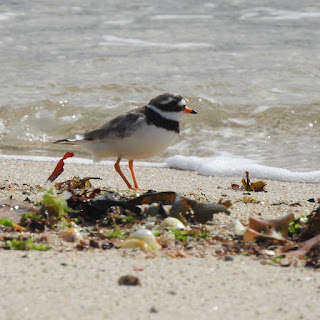I needed to spend a day in the office this week and as if by magic the alert came up on the phone that there was a White-tailed Lapwing in Lincolnshire. Needless to say it added some extra zip to my productivity to ensure I could undertake an evening twitch with the Squire.
The last record in Britain (seven in total) was in 2010 where an individual visited a number of counties on an extended stay. This was before I was interested in travelling to see rarer birds. The first record was actually in Warwickshire at the Packington gravel pits back in 1975.
This very rare wader that breeds in central asia to Iraq would be a great addition for us both, what could go wrong? The bird had been visable all day from Townend Hide, it was just a case of ticking off the miles and enjoy the view.
As we walked towards the visitor centre the helpful warden greeted us with "sorry chaps the bird had flown north five minutes ago" . It was like a very bad joke but it wasn't! Still not quite believing the news we headed to a half empty hide which contained a mixture of elated & dispondant birders. We took our seats and hoped for the best convincing ourselves the Lapwing would return, but deep down accepting the reality of it wouldn't.
There was a fantastic selction of birds for us to watch including 5 Ruff, Spotted Redshank, Greenshank, Black-tailed Godwits, loads of Snipe, Bearded Tit, Green Sandpiper, Bittern & Marsh Harrier.
About 30 minutes passed, when the birder to my right called "its coming back" and he was right. Gliding in from our right was the White-tailed Lapwing that circled the scrapes before landing fifty yards in front of us! Wow !......
We had terrific views of the bird as he fed around the edges of the scrapes. The other waders couldn't quite believe what they were sharing their area of mud with. The hide door slammed once loud making the bird take flight again but thankfully only to the island where most of the Ruff were.
With positive news being reported again the hide was filling towards its capacity so we decided to leave and let someone else have our box office seats. Quite an evening and proves again you can never guess what the next rarity might be.





























































